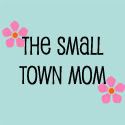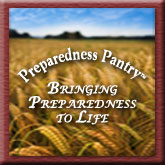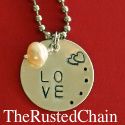
I came upon this idea from a blog that I regularly read so, with her permission, I am stealing her idea!
Today I am thankful for SOFT TOILET PAPER! I know, this is a strange thing to write about but I think that it's important to remember the things that we take for granted on a daily basis.
Brad and I are sticklers for soft, 2 ply TP so you can imagine my surprise when he came home the other day with a 24 pack of 1 ply, not very soft tissue. I didn't say anything, after all, he was doing me a favor by picking it up when he ran into town. We are using it and boy have I noticed a difference! It's OK. We will survive and we will be alright...but boy am I thankful for my precious 2 ply, soft little buddy that I have taken for granted all of these years!
What did people use before toilet paper? Well, just use your imagination: grass, leaves, fur, mussell shells, corncobs, stinging nettles... okay, maybe not that last, at least not more than once. The ancient Greeks used stones and pieces of clay; ancient Romans used sponges on the ends of sticks, kept in jugs filled with salty water. Mideasterners commonly used the left hand, which is supposedly still considered unclean in the Arabian region.
"Official" toilet paper - that is, paper which was produced specifically for the purpose - dates back at least to the late 14th Century, when Chinese emperors ordered it in 2-foot x 3-foot sheets.
Corncobs and pages torn from newspapers and magazines were commonly used in the early American West. The Sears catalogue was well-known in this context, and even produced such humorous spinoffs as the "Rears and Sorebutt" catalogue. The Farmer's Almanac had a hole in it so it could be hung on a hook and the pages torn off easily.
Joseph C. Gayetty of New York started producing the first packaged toilet paper in the U.S. in 1857. It consisted of pre-moistened flat sheets medicated with aloe and was named "Gayetty’s Medicated Paper". Gayetty's name was printed on every sheet.
Rolled and perforated toilet paper as we're familiar with today was invented around 1880. Various sources attribute it to the Albany Perforated Wrapping Paper Company in 1877, and to the Scott Paper company in 1879 or 1890. On a side note, the Scott Company was too embarrassed to put their name on their product, as the concept of toilet paper was a sensitive subject at the time, so they customized it for their customers... hence the Waldorf Hotel became a big name in toilet paper.

Today I am thankful for SOFT TOILET PAPER! I know, this is a strange thing to write about but I think that it's important to remember the things that we take for granted on a daily basis.
Brad and I are sticklers for soft, 2 ply TP so you can imagine my surprise when he came home the other day with a 24 pack of 1 ply, not very soft tissue. I didn't say anything, after all, he was doing me a favor by picking it up when he ran into town. We are using it and boy have I noticed a difference! It's OK. We will survive and we will be alright...but boy am I thankful for my precious 2 ply, soft little buddy that I have taken for granted all of these years!
What did people use before toilet paper? Well, just use your imagination: grass, leaves, fur, mussell shells, corncobs, stinging nettles... okay, maybe not that last, at least not more than once. The ancient Greeks used stones and pieces of clay; ancient Romans used sponges on the ends of sticks, kept in jugs filled with salty water. Mideasterners commonly used the left hand, which is supposedly still considered unclean in the Arabian region.
"Official" toilet paper - that is, paper which was produced specifically for the purpose - dates back at least to the late 14th Century, when Chinese emperors ordered it in 2-foot x 3-foot sheets.
Corncobs and pages torn from newspapers and magazines were commonly used in the early American West. The Sears catalogue was well-known in this context, and even produced such humorous spinoffs as the "Rears and Sorebutt" catalogue. The Farmer's Almanac had a hole in it so it could be hung on a hook and the pages torn off easily.
Joseph C. Gayetty of New York started producing the first packaged toilet paper in the U.S. in 1857. It consisted of pre-moistened flat sheets medicated with aloe and was named "Gayetty’s Medicated Paper". Gayetty's name was printed on every sheet.
Rolled and perforated toilet paper as we're familiar with today was invented around 1880. Various sources attribute it to the Albany Perforated Wrapping Paper Company in 1877, and to the Scott Paper company in 1879 or 1890. On a side note, the Scott Company was too embarrassed to put their name on their product, as the concept of toilet paper was a sensitive subject at the time, so they customized it for their customers... hence the Waldorf Hotel became a big name in toilet paper.

Life is full of the "little things". I find that it is so easy to be thankful for the obvious, like our homes, our families, our health, our cars, a new job or any other "big" thing that enters our life. But to me, the little things in life are sometimes the things that if taken away, we would be left in a whirlwind of confusion and discomfort. I try to express my gratitude to Heavenly Father each day for ALL that He has provided for me...and that includes toilet paper.
So today I stick by my post! I am thankful for something that we all need and use daily. Something that actually has a history and a story worth reading and understanding. What are you thankful for?
















.JPG)











1 comment:
LOL! That cartoon was funny!
Loved your very interesting post. It took me back to my childhood. We had a great aunt that we lived close by (we had a farm and they had a farm). Anyway, my great Aunt was a VERY frugal lady. They refused any indoor plumbing in their house for years. We always had to use their outhouse. And.......yes.......you guessed it......the "toilet paper" was the good old Sears catalogues. And we were to make sure that we only tore out ONE page at a time. Needless to say, I would eventually just "hold it in" when we went to visit, so I could just "go" at home when we FINALLY got there. ; D
Great post!
I am thankful for toothbrushes. I should do some research on what they did before those. I can't live without brushing my teeth several times a day.
Post a Comment